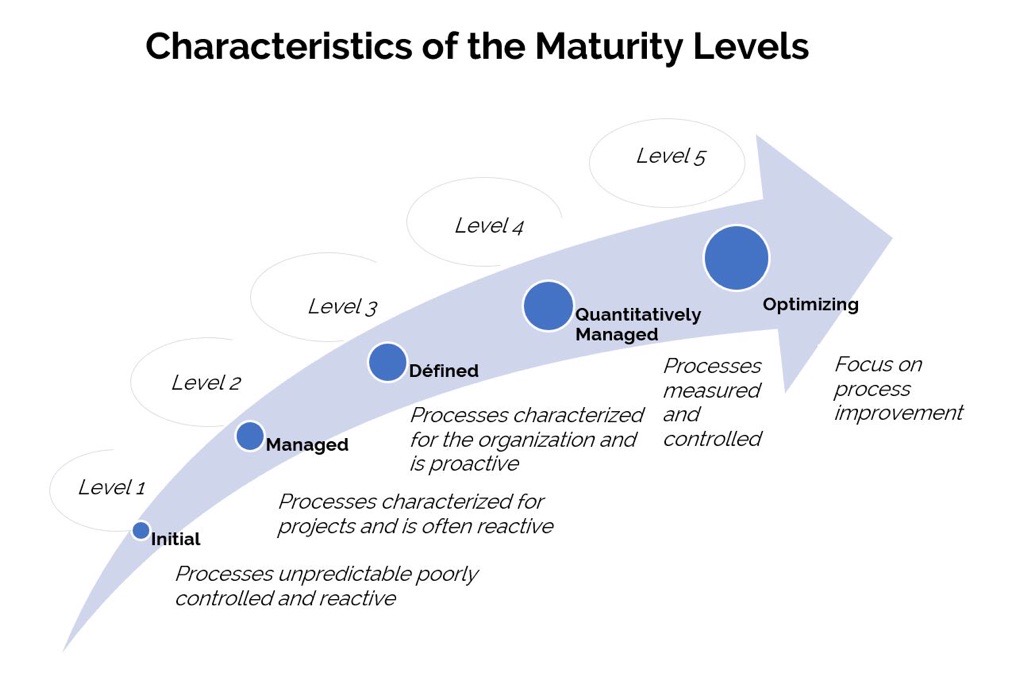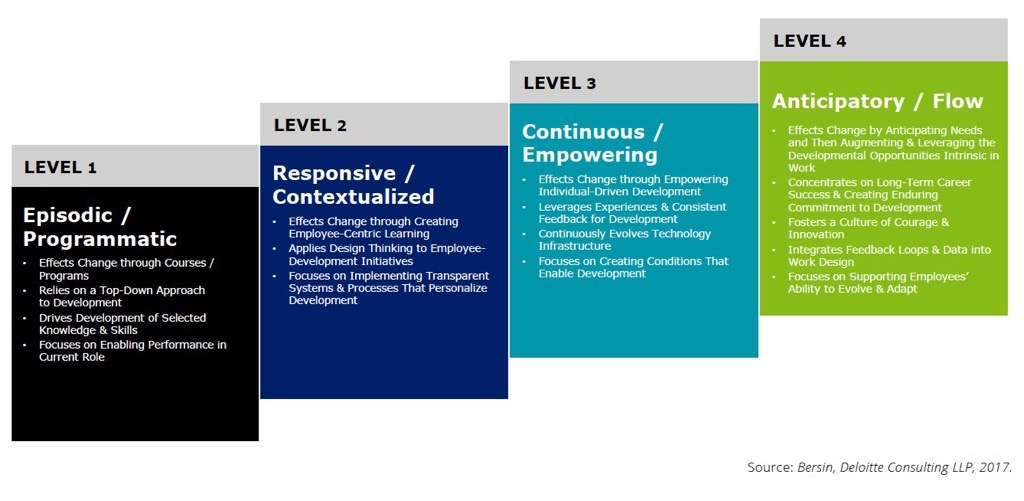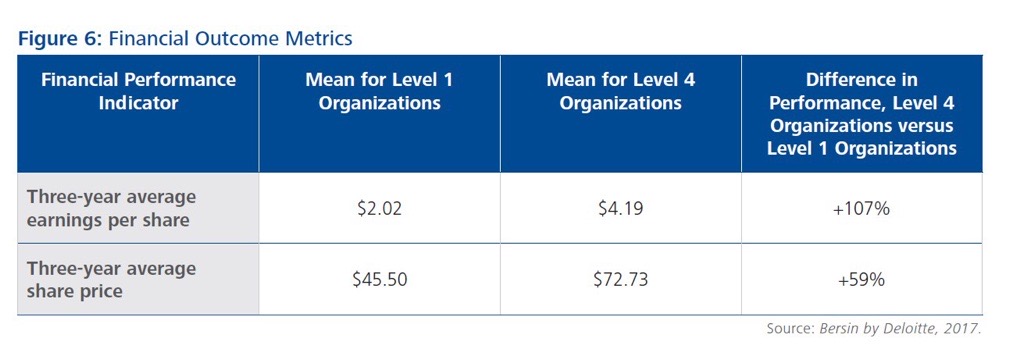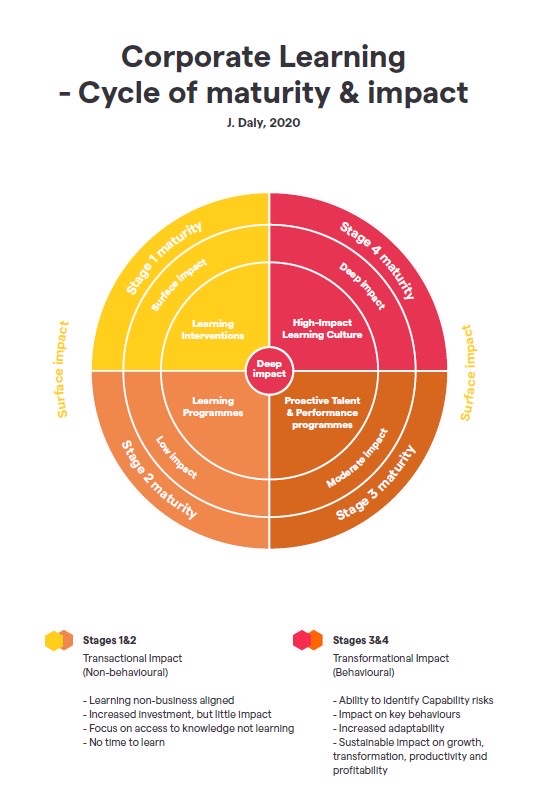Part 2/3
In Part 1 of this 3-part series, we traced the origins of the maturity model and touched on how useful they can be to L&D. Here in Part 2, we follow the evolution of these models in parallel to the digital transformation of the workplace.
Beyond academia towards digital transformation
Building on the groundwork that was established in the 1950s with Bloom and Kirkpatrick, other methods were developed in the 1990s to objectively evaluate how the implementation of training programs impact companies. One of the best-known examples hailed from the automotive industry and became known as the Six Sigma method. This remarkably successful model focused on process control and customer satisfaction, viewing training as a process that can be directly measured and controlled-and therefore continuously improved.
This model and those that came before it, eventually led to the creation of the “maturity” concept for corporate training in the 2000s, which emerged and advanced alongside web engineering. Developed by the Software Engineering Institute (SEI), Capability Maturity Model was applied to corporate training by the Project Management Institute (PMI).
This model is made up of 5 levels:
The Capability Maturity Model
- Level 1 – Initial: Training processes are implemented in an unpredictable and reactive manner. Ad hoc in nature, they are difficult to replicate.Level 2 – Repeatable / Managed: Basic processes are established, defined, and documented. They can be repeated for other projects.
- Level 3 – Defined: Training processes are standardized by the company. Though the approach has changed from reactive to proactive, it still retains a silo structure.
- Level 4 – Predictable: Training processes are analyzed, measured, and controlled by the company across the board.
- Level 5 – Optimizing: Training processes are continuously improved through innovation to better meet corporate training needs.

Although CMM is no longer used within the L&D world, it is still commonly applied to software development processes.
Josh Bersin and HILO
Shortly after the debut of CMM, professional development expert Josh Bersin established his own High-Impact Learning Organization Maturity Model (HILO). This represented an advancement in how L&D used maturity models.
This model presents a maturity curve on 4 levels:
The HILO Model
- Level 1: Episodic / Programmatic: Training programs are set up by companies to strengthen the skills of employees within their particular role. Level 2: Responsive / Contextualized: Companies give employees the means to take charge of their own development. Employees can therefore choose the topics and formats that suit them best.
- Level 3: Continuous / Empowering: Employees independently decide on every aspect of their training programs and professional development.
- Level 4: Anticipatory / Flow: Training is fully integrated into the workplace, which allows employees to anticipate and adapt to change.

Over time, analysts at Bersin (which became part of Deloitte in 2013) have also conducted financial performance analyses by correlating a company’s business results with their position on the maturity curve. By tracking two specific indicators over an average period of three years, analysts were able to determine whether respondents who reported strong employee skills development initiatives and practices also scored higher on financial performance (see Figure 6). As demonstrated by the data, respondents with higher maturity levels did indeed score better than other companies with lower maturity levels.

Maturity in the Digital Era
Digital transformation has had an impact on many things, and the Maturity Model is no exception. Created in 2003 by Laura Overton, the Emerald Works Index aims to analyze and benchmark the overall health of corporate learning. Formerly known as the Towards Maturity Index, more than 8,500 companies have taken part in this Health Check since its inception.
Parallel to the rapid emergence of new learning technologies, Towards Maturity has developed this tool to guide learning professionals and help them innovate. Through a decade of digital revolution, TM’s premise has been that by capitalizing on digital transformation, learning professionals can boost the impact of training in areas such as growth, transformation, productivity, and profitability.

Towards Maturity’s research also focuses on the evolution of L&D skills and capabilities to develop and manage digital learning transformation. The results of this research have consistently shown that the risks of status quo in L&D functions, as well as some resistance to change, have prevented corporate learning from fully realizing the benefits of digital learning as a strategic driver for business performance.
The latest report published in January 2020 by Emerald Works, under Jane Daly’s leadership, includes a new version of their Model. According to this new approach, corporate learning must refocus on a transformational impact rather than a transactional impact in order to achieve full effect. Companies must also shift from basic knowledge accessibility to making skills identifiable. To fully implement these further integrated learning and talent programs, L&D must adopt and encourage an appropriate learning culture.
Did you like this article? Be sure to check back for Part 3, where we will examine Maturity Models in relation to the ‘Flow of Work’ in a modern workplace.